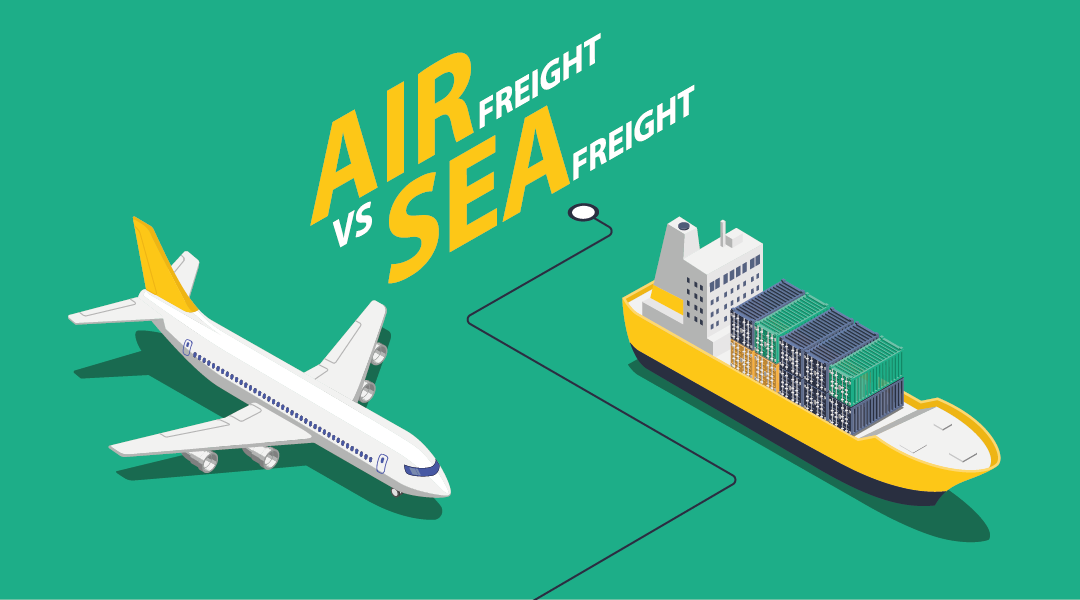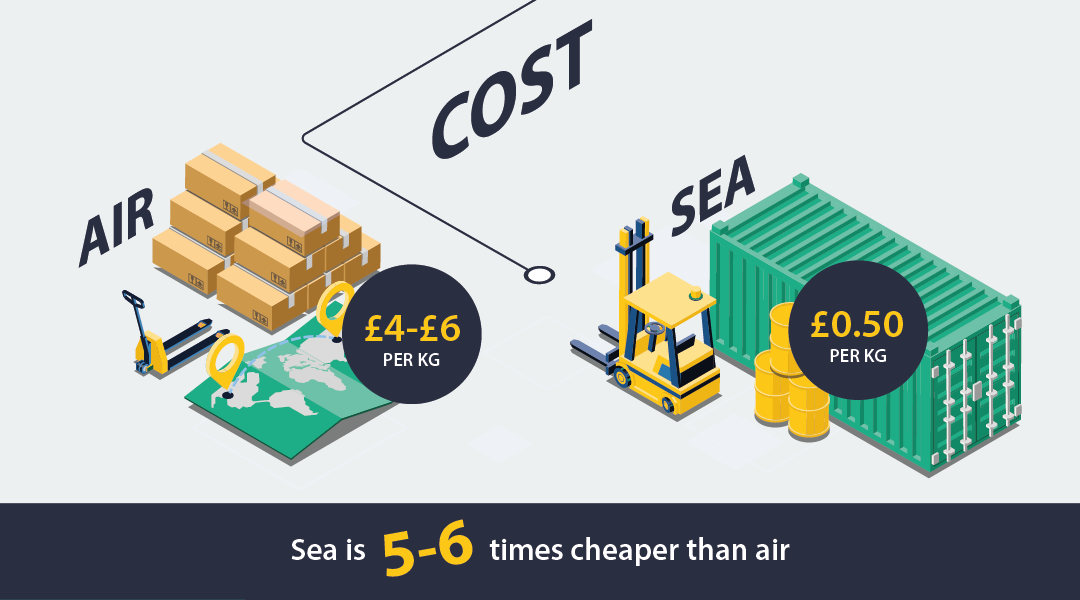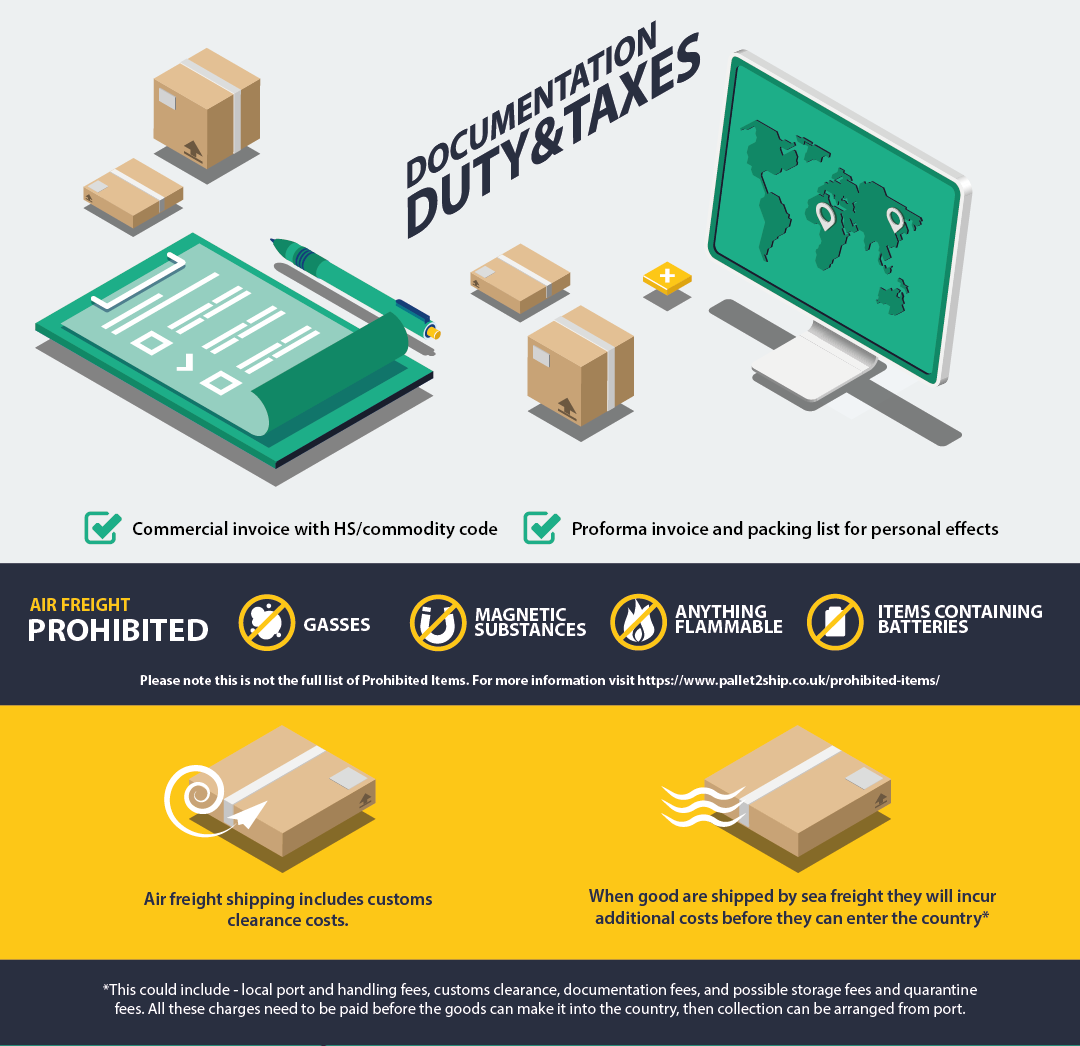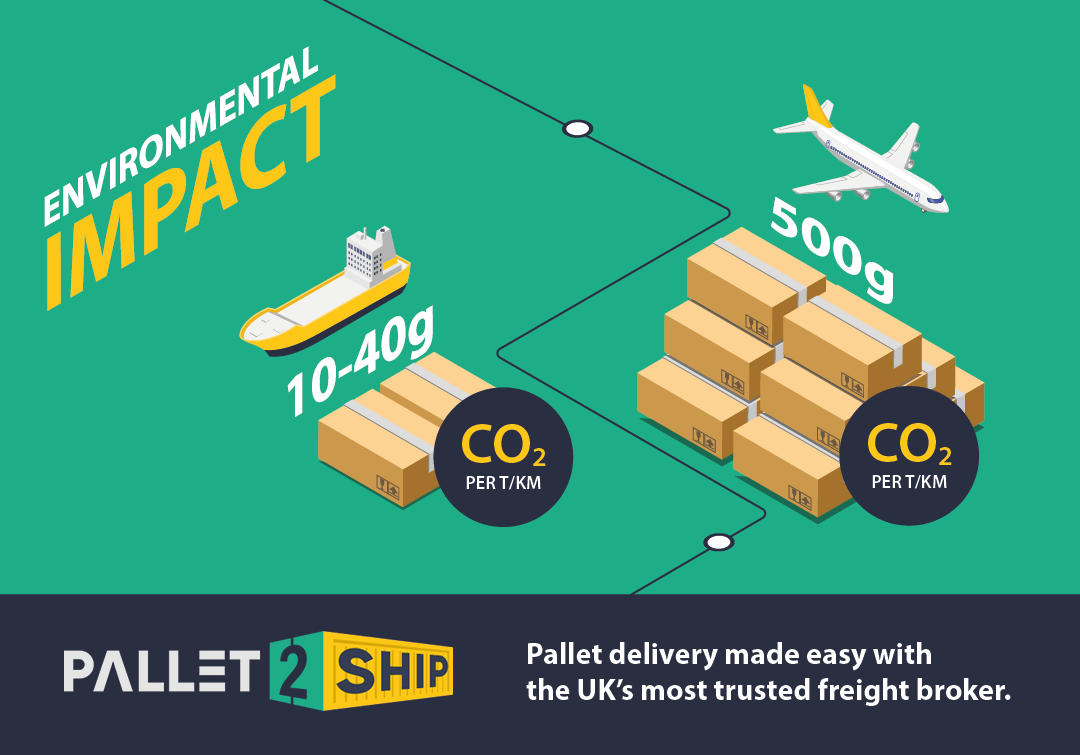Logistics 101
Sea Freight vs Air Freight - What you need to know

If you're a merchant or manufacturer shipping to and from overseas throughout the past 18 months, you will have been faced with some challenging decisions in terms of freight costs and the different services available.
The global supply chain has been stretched to and beyond its capacity due to the coronavirus pandemic, a huge surge in eCommerce, and a lack of available space across all different modes of freight. Shippers of all sizes and scales have had to deal with rising costs and longer lead times because of the disruption, meaning that informed decision making and accurate forecasting have become more important than ever.
In this post, we will explore two of the most widely used modes of shipping - sea freight and air freight - by weighing up the pros and cons of each, to help you make the best possible decisions for your personal or business pallet shipping requirements.

Sea Freight vs Air Freight - Cost
In the majority of circumstances, sea freight is and always has been a cheaper option than air freight. Generally, sea freight can be between 5 - 6 times cheaper than air, but this gap can extend even further if you increase the weight of your cargo - by sea freight it's unlikely the cost will increase, whereas importing heavier cargo via air freight will be much more than 4 - 6 times the cost of sea freight.
For smaller shipments though, air freight can be beneficial. If shipping 1-2 small pallets via sea freight, the cost is calculated per cubic meter, so if your consignment is that small then air transport may cost you less when you take into account all charges associated with sea freight. However, if shipping a small quantity of sensitive and expensive items, the speed and security of air freight might be preferential for you.

Sea Freight vs Air Freight - Transit Times
In terms of speed and reliability, air freight is a superior option. Shipments via sea freight can take several weeks, or even up to two months or more given the current disruptions, whereas shipments via air tend to be at the intended destination in a matter of days.
One of the main considerations here is what you will be shipping. For high-value or perishable items, or medical products, air freight has significant advantages because of high levels of security and express delivery options. There is an added advantage of being more traceable too, as all flights are tracked, which gives businesses greater visibility and peace of mind. This doesn't mean that sea freight is not trackable, indeed, it is, however the details are far superior for air freight.
If you are a small or medium-sized business, it's also worth taking into account your business goals and what has brought you success to this point. If you have built a reputation amongst your customers for speed and reliability of delivery, it may be worth taking the short term hit in terms of air freight costs for the purposes of customer retention and acquisition whilst other competitors may be struggling to fulfil orders.
However, if you are shipping for personal reasons, such as sending goods to family or friends or moving abroad, timescales will be less important and cost effectiveness to the fore. In this instance, sea freight is likely to be a far better option for your requirements.

Documentation, Duty & Taxes
The requirements in terms of documentation for sea freight and air freight are largely similar. Both require a commercial invoice containing HS/Commodity codes. If you are shipping personal effects then you will need a proforma invoice and packing list, and three copies of the invoice must be attached to the pallets on all occasions. Depending on the destination country and the nature of your goods, further specific documentation may be required.
It is also worth bearing in mind that the list of prohibited items is far more extensive for air freight than for sea freight. For example, no items containing batteries, no gasses, magnetic substances, or anything flammable can be shipped via air freight. You can find out more on this by visiting our Prohibited & Restricted Items section.
As far as Duties and Taxes are concerned the very same percentages apply to both modes of transport, so the requirements are largely similar. Duty is calculated at an allocated percentage based on the nature of goods, so it will be the same regardless of what shipping method you choose. Tax is basically VAT in Europe or GST in the USA, Australia, etc and it would also remain the same for both modes. However, Tax applies on the value one the goods plus the shipping costs, so if the shipping costs are greater, the result will be a small increase in the value of Tax that needs to be paid.
One advantage of air freight is that with Pallet2Ship this service operates as a door-to-door option - this means that all costs are included in the original quote. However, with sea freight the prices are quoted for shipping to port only. When goods arrive at port there will be a number of other charges before those goods can enter the country, including things like local port and handling fees, customs clearance, and documentation fees. All of these charges need to be paid before the goods can make it into the country, where collection from port can then be arranged.

Environmental Impact
Climate change continues to be in sharp focus in the public and corporate consciousness, and it is not an issue that is going away any time soon. With everyone from international organisations to individual people considering their impact on the environment more carefully, SMEs are also taking more responsibility to work towards a more sustainable future.
If you are concerned about your carbon footprint when it comes to shipping, sea freight is the option for you. Research has shown that aeroplanes emit around 500 grams of CO2 per metric ton of freight per km of transportation, while ships only emit 10 to 40 grams of CO2 per km.
There are some concerns around the measurement in this regard, as there are pollutants other than CO2, and jet fuel produces fewer of these as it burns much cleaner than lower grade fuels used on ships. However, it is widely recognised that overall, sea freight is better for the environment than air freight.
Clearly there is much to consider when it comes to shipping via sea freight or air freight, but we hope that the advice in this article and provided in our infographic is useful to you. If you feel you need further advice for your shipping requirements then please consult our FAQs, or you can contact our customer service team.